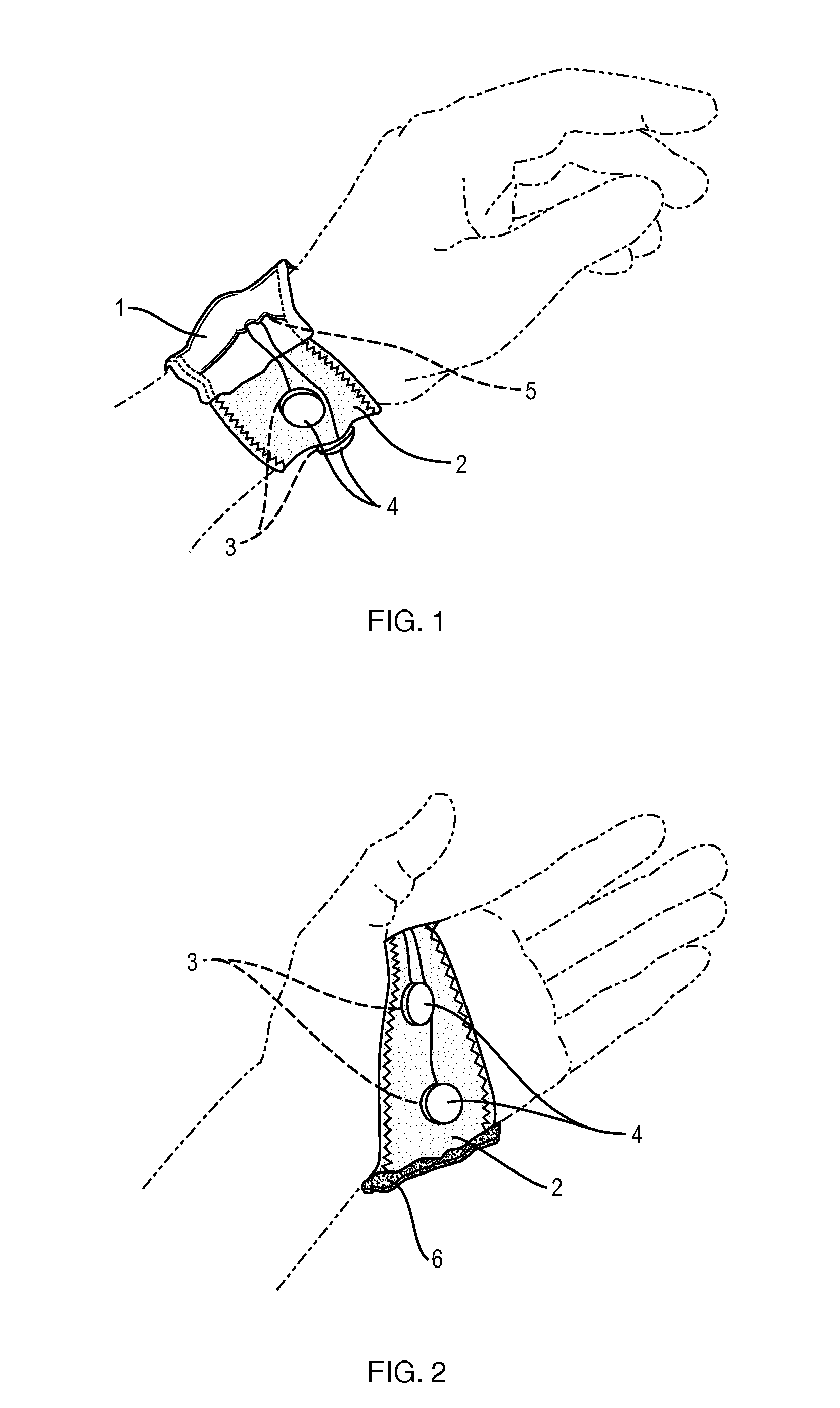Washable wearable biosensor
a biosensor and washable technology, applied in the field of physiological sensors, can solve the problems of inconvenient use, poor long-term wearability, and bulky wireless biosensor devices, and achieve the effects of avoiding covering the same, avoiding skin irritation, and ensuring safety
- Summary
- Abstract
- Description
- Claims
- Application Information
AI Technical Summary
Benefits of technology
Problems solved by technology
Method used
Image
Examples
Embodiment Construction
[0039]FIG. 1 shows a flexible wrist / hand band with a sensor to detect electrodermal activity (EDA), also known as galvanic skin response. In FIG. 1, the band is being worn on the wrist.
[0040]The electrodes for the EDA sensor [3] are made of one or more electro-conductive materials, including conductive fabrics and yarns, conductive polymers, conductive elastomers or metal. A variety of these materials are available from commercial sources. For example, the fabric can be a medical-grade silver-plated 92% Nylon 8% Dorlastan fabric (Cat. # A251, Less EMF, Inc., Albany, N.Y.). This electro-conductive fabric is washable, allows the skin to breathe, maintains elasticity and provides consistent contact with the skin.
[0041]Alternatively, the electrode comprises electro-conductive thread or yarn embroidered into fabric or other material. For example, a stainless steel electro-conductive thread sold by Bekaert (Winston Salem, N.C.) can be used. This enables greater comfort and durability sinc...
PUM
 Login to View More
Login to View More Abstract
Description
Claims
Application Information
 Login to View More
Login to View More - R&D
- Intellectual Property
- Life Sciences
- Materials
- Tech Scout
- Unparalleled Data Quality
- Higher Quality Content
- 60% Fewer Hallucinations
Browse by: Latest US Patents, China's latest patents, Technical Efficacy Thesaurus, Application Domain, Technology Topic, Popular Technical Reports.
© 2025 PatSnap. All rights reserved.Legal|Privacy policy|Modern Slavery Act Transparency Statement|Sitemap|About US| Contact US: help@patsnap.com



